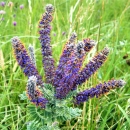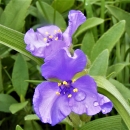About Us
Welcome to the National Wildlife Refuge System
The National Wildlife Refuge System, within the U.S. Fish and Wildlife Service, manages a national network of lands and waters set aside to conserve America's fish, wildlife, and plants.
Following the establishment of Florida's Pelican Island as the first National Wildlife Refuge in 1903, the Refuge System has grown to encompass more than 565 National Wildlife Refuges spanning approximately 100 million acres of lands and 750 million acres of oceans in the United States. Refuges are home to more than 700 species of birds, 220 species of mammals, 250 reptile and amphibian species, and more than 200 species of fish. Fifty-nine Refuges have been established with a primary purpose of conserving threatened or endangered species.
More than 41 million people visit national wildlife refuges each year to participate in activities such as hunting, fishing, wildlife observation, and photography, and to attend environmental education and interpretive programs.
There is at least one National Wildlife Refuge in every state, and one within an hour's drive of most major cities — offering people a welcoming, safe, and accessible place to nourish their spirits and reconnect to the land.
Our Mission
The National Wildlife Refuge System Improvement Act defines a unifying mission for all Refuges, including a process for determining compatible uses on Refuges, and requiring that each Refuge be managed according to a Comprehensive Conservation Plan (CCP). The mission of the National Wildlife Refuge System is to administer a national network of lands and waters for the conservation, management, and where appropriate, restoration of the fish, wildlife, and plant resources and their habitats within the United States for the benefit of present and future generations of Americans. Each Refuge must be managed to fulfill the specific purposes for which the Refuge was established and the System mission. The first priority of each refuge is to conserve, manage, and if needed, restore fish and wildlife populations and habitats according to its purpose.
Our History
Waubay National Wildlife Refuge encompasses 4,650 acres of wetlands, native tallgrass prairie, and bur oak forest that provide a wide variety of nesting habitat for more than 100 species of waterfowl, songbirds, and upland game birds, as well as 140 other bird species during migrations. Mammals include species from the ever present white-tailed deer to the more elusive coyote and the diminutive least shrew. The central location of Waubay National Wildlife Refuge (NWR) in North America gives visitors the chance to see a mix of eastern, western, northern, and southern species.
Waubay National Wildlife Refuge was established in 1935 as a “refuge and breeding ground for migratory birds and other wildlife.” During the 1930s, waterfowl populations dropped from an estimated 100 million (1930) to 20 million in 1934. Many people believed it wasn’t enough to just stop the decline of waterfowl; they felt production would have to increase, and quickly. Three men were instrumental in making that happen and helping to create the Refuge System we have today - Jay Norwood “Ding” Darling, Ira Gabrielson, and J. Clark Salyer. J.N. Ding Darling is known as the father of the “Duck Stamp,” a Federal program which provides funds to protect habitat and create refuges like Waubay National Wildlife Refuge. Ira Gabrielson led the U.S. Biological Survey (which later became the U.S. Fish and Wildlife Service) and made science an important part of wildlife management. J. Clark Salyer spend months crossing the countryside in his car, buying land for the Refuge System based on modern wildlife management principles.
Waubay was one of 22 refuges established in 1935. The Civilian Conservation Corps (CCC) came to work on many of these refuges, building roads, dikes, towers, and other infrastructure, providing a lifeline for both ducks and people during desperate times.
Today, Waubay National Wildlife Refuge continues to provide habitat for waterfowl and other migratory and breeding birds and wildlife. The tradition of the CCC also continues with our Youth Conservation Corps where local teens gain valuable work experience and learn about the conservation of our natural resources. In addition, refuges like this one provide benefits to local economies through recreational spending and increased tax revenue as many visitors come from outside the local area.



